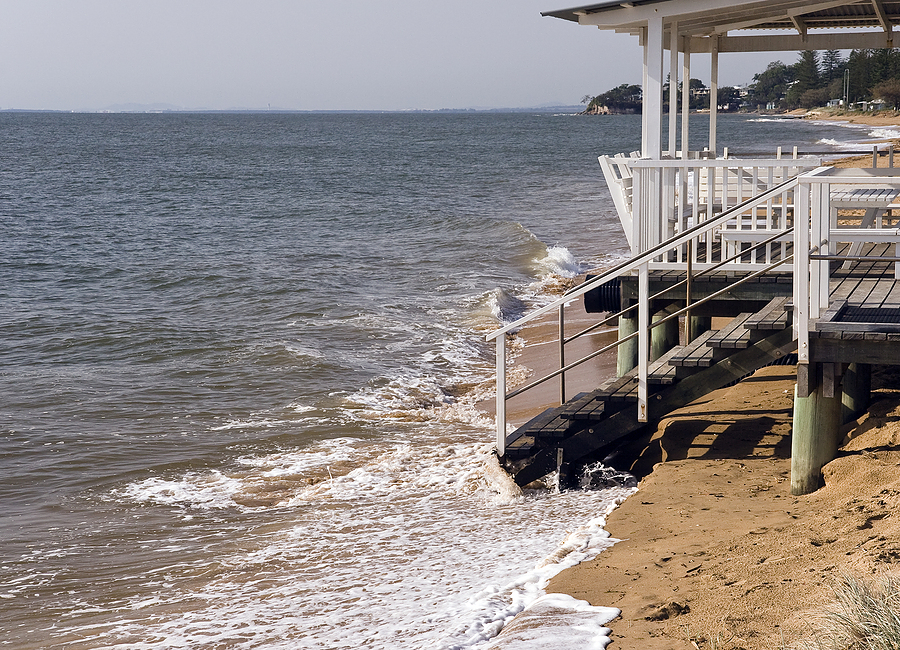Jed Joseph Pitre was born in Thibodaux, La., in 1961 and remembers when the beach at Grand Isle seemed wider and thriving coastal marshes were used for family fishing.
But the beach is now narrower and the coastal marshes are gone, replaced by open water.
A science teacher at Thibodaux High School, Pitre was one of 19 south Louisiana residents interviewed by students about the cultural changes they’ve experienced and the coastal erosion they and their families have witnessed.
Louisiana Residents Moving From Coastal Areas Due to Erosion
It was all part of a Louisiana Sea Grant Coastal Change Oral Histories Project designed to help raise awareness among high school students about the threat coastal erosion poses to their culture and future.
“What we want is to get the kids to be more aware about how quickly we’re losing land,” said Darcy Wilkins, research associate and project manager with the oral histories project.
Louisiana has lost almost 1,900 square miles of land since the 1930s through a combination of levees along the Mississippi River hemming-in sediment that used to feed the wetlands, canal dredging, natural sinking and sea level rise.
There are estimates the state could lose another 1,750 square miles in the coming decades if nothing is done to help slow or stop land loss.
“I feel like a lot of people don’t understand, even people in Louisiana don’t understand what’s happening,” she said.
To help the students get a better handle on the land loss, what it has meant to people in their community and what it could mean to them in the future, interested students were trained in the process of taking oral histories.
Teachers from South Cameron High School, West St. Mary School, Thibodaux High School and Holy Cross High School in New Orleans used the interviewing methods of the T. Harry Williams Center for Oral History at LSU to train the students for the project.
Each school got four or five sets of audio recording equipment, and students were asked to talk to community members about their experiences with land loss, coastal restoration, sea level rise and the impact it may have had on their lives.
“I was pleasantly surprised they (the students) were all so into it,” she said. “Louisiana is a really special place, and people get excited about sharing how special it is.”
The 19 completed interviews are now housed at the T. Harry Williams Center. The interviews include those with a shrimper, river boat captains, coastal scientists, the first black woman to run for mayor in Thibodaux, a nun, fishermen and hunters.
Some of the subjects provide a glimpse into what living in south Louisiana was like in the 1950s and 1960s.
One of these is Marie Therese Rodrigue, who was born in Chackbay in 1928 and arrived at Mount Carmel Academy when she was 15 to become a nun.
According to a summary of the interviews, Rodrigue recalls her childhood in Chackbay when people made their livelihood by farming. Her father was a farmer who was a trapper in the winter; there was no electricity, no telephone, no running water, but everyone in the area had an outdoor toilet.
Although the interviews are completed and catalogued, Wilkins is continuing to work on a how-to manual to incorporate oral history work into classrooms and on a documentary about the project that will be released in November at an LSU viewing.
Was this article valuable?
Here are more articles you may enjoy.


 Billionaire NFL Owner Suing Over Billboards Near His SoFi Stadium
Billionaire NFL Owner Suing Over Billboards Near His SoFi Stadium  California Bill Would Require Insurer Claims Handling Plans, And Double Penalties
California Bill Would Require Insurer Claims Handling Plans, And Double Penalties  Musk’s xAI Faces California AG Probe Over Grok Sexual Images
Musk’s xAI Faces California AG Probe Over Grok Sexual Images  JPMorgan Wins Gender Pay Gap Dispute Against London Analyst
JPMorgan Wins Gender Pay Gap Dispute Against London Analyst 